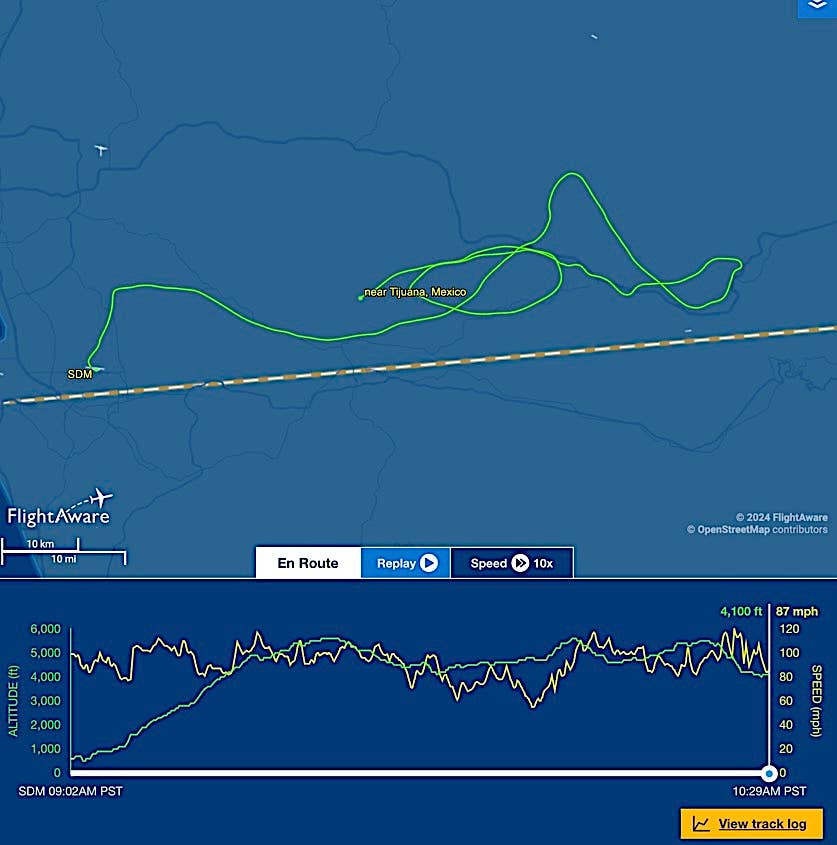General Aviation Accident Bulletin
AVweb’s General Aviation Accident Bulletin is taken from the pages of our sister publication, Aviation Safety magazine. All the reports listed here are preliminary and include only initial factual findings…

Aviation Safety Accident Bulletin
AVweb's General Aviation Accident Bulletin is taken from the pages of our sister publication, Aviation Safety magazine. All the reports listed here are preliminary and include only initial factual findings about crashes. You can learn more about the final probable cause on the NTSB's website at www.ntsb.gov. Final reports appear about a year after the accident, although some take longer. Find out more about Aviation Safety at www.aviationsafetymagazine.com.
January 2, 2021, Moab, Utah
Cessna P210N Pressurized Centurion
At about 1430 Mountain time, the airplane was substantially damaged during an attempted takeoff when its engine lost power. The pilot and three passengers were not injured. Visual conditions prevailed.
According to the pilot, pre-takeoff operations were normal. Shortly after liftoff, at about 100-200 feet AGL, the engine began to run rough and the pilot noted partial loss of power. The pilot retracted the landing gear but noticed an additional power loss and initiated a forced landing on the remaining runway after extending the landing gear. The airplane touched down on the runway’s left side before veering right and entering the snow-covered runway safety area. The right main landing gear collapsed, and the airplane came to rest on the right-wing tip and right horizontal stabilizer.
January 2, 2021, New Hudson, Mich.
Piper PA-24-250 Comanche 250
The airplane was destroyed at 1541 Eastern time when its pilot apparently lost control while executing a missed approach. The non-instrument-rated pilot and two passengers were fatally injured. Instrument conditions prevailed.
At about 1457, while en route, the pilot apparently obtained an IFR clearance to his destination and subsequently was cleared for an approach that had been NOTAM’d out of service. The airplane descended to 1900 feet MSL and passed over its destination, then appeared to climb to about 2000 feet before it entered two descending left-hand spiral turns at decreasing airspeed. The accident site was about ½-mile north of the destination airport. There was no record of the pilot obtaining a weather briefing or filing a flight plan on the day of the accident.
January 4, 2021, Cash, Ark.
Beechcraft G58 Baron
At about 0933 Central time, the airplane was destroyed when it collided with terrain six minutes after takeoff. The private pilot and passenger sustained fatal injuries. Visual conditions prevailed.
After takeoff, the airplane climbed to about 2300 feet MSL, and then began a descent while tracking southwest. At about 0932, it turned right and flew west-northwest until flight track data was lost over the accident site, a muddy field about 16 miles southwest of the departure airport.
January 6, 2021, Palm Springs, Calif.
Cessna 172N Skyhawk
The airplane was substantially damaged at about 1411 Pacific time during an apparent go-around after a bounced landing attempt. The solo pilot was seriously injured; visual conditions prevailed.
After completing two touch-and-go landings, the airplane was observed to land hard, bounce and initiate a climb. Shortly thereafter, the airplane banked sharply to the left and then spiraled down to the ground. A witness reported the engine did not sound like it was producing full power during the go-around.
January 9, 2021, Warm Springs, Ore.
Cessna 560 Citation V
At 1336 Pacific time (PST), the airplane was destroyed when it entered a descending turn during its initial climb to cruising altitude and subsequently impacted terrain. The solo private pilot was fatally injured. Visual conditions prevailed; an IFR flight plan had been filed.
After takeoff at 1307, the pilot missed a series of radio calls and failed to follow clearances. At one point, a Seattle ARTCC controller advised the pilot of a low-altitude alert warning as the airplane flew just south of Mount Hood. By 1327, the airplane had climbed to FL270 and began to track 30 degrees right of course while continuing its climb. A controller advised the flight it was off its heading, but the pilot did not respond. The airplane reached FL310 at 1328:45, and then began to descend. Over the next eight minutes, it was in a spiraling and descending one-mile-radius right turn. The airplane collided with terrain at an elevation of 3600 feet, leaving a 1500-foot-long debris field and sustaining heavy fragmentation and thermal damage.
While the private pilot held type ratings for the Grumman G-111 Albatross and Learjet, he did not have a type rating for the Cessna 560. He had trained for the type rating toward the end of 2020, but the provider later stated the pilot had not performed to a level sufficient to be issued a type rating or single-pilot exemption. Investigation revealed the accident flight likely was the first time he had flown the airplane on his own.
January 10, 2021, Old Bethpage, N.Y.
Cessna 421B Golden Eagle
The airplane was substantially damaged at about 1302 Eastern time during an off-airport landing after its pilot reported losing power on both engines. Visual conditions prevailed.
Shortly after takeoff, the pilot reported loss of power on both engines and stated he was returning to the departure airport. Instead, the airplane impacted a solid waste disposal facility about 2.3 NM from the desired runway. The pilot sustained serious injuries.
This article originally appeared in the April 2021 issue of Aviation Safety magazine.
For more great content like this, subscribe to Aviation Safety!






